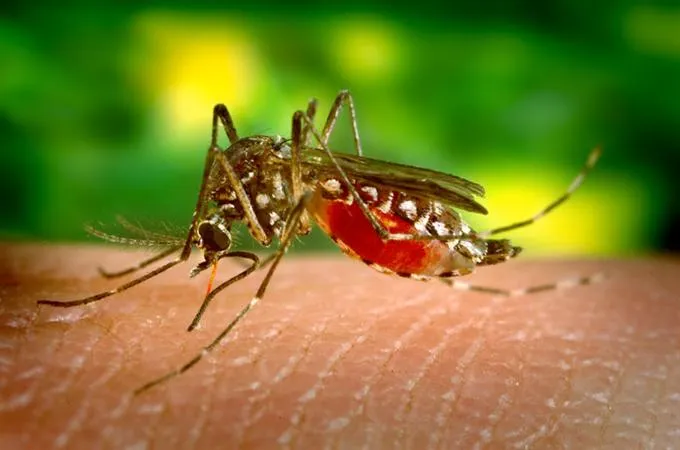In an innovative and somewhat controversial development, Australian scientists are working on genetically engineering male mosquitoes to inject a poison into females during mating, effectively curbing the population of these dangerous pests. This groundbreaking research aims to address the growing concern of mosquito-borne diseases, such as malaria, dengue fever, and Zika virus, that have long been a challenge for public health systems worldwide. With mosquitoes being responsible for more than a million deaths annually, the research into genetic modifications could be a game-changer.
1. The Mosquito Problem: A Global Health Crisis
Mosquitoes are known to carry and spread diseases that impact millions of lives globally, particularly in tropical and subtropical regions. The World Health Organization (WHO) estimates that diseases transmitted by mosquitoes cause over 700,000 deaths annually. Malaria, in particular, continues to be a significant health challenge, with over 200 million cases reported worldwide. In addition to malaria, mosquitoes are responsible for spreading dengue, yellow fever, chikungunya, and the Zika virus, all of which can have severe consequences on both public health and economic stability.
Given the immense danger mosquitoes pose, scientists have been exploring a variety of methods to control their population. Traditional methods, such as insecticides and mosquito nets, have had limited success, and the widespread resistance of mosquitoes to these chemicals has prompted researchers to seek alternative, more sustainable solutions.
2. The Role of Genetic Engineering in Mosquito Control
Genetic engineering is being increasingly applied to combat mosquito-borne diseases. Scientists have explored various strategies, such as altering the genes of mosquitoes to make them resistant to the viruses they carry or making them sterile so that they are unable to reproduce. One of the most notable approaches has been the development of genetically modified (GM) mosquitoes, which have been released in different countries to reduce the number of mosquitoes capable of transmitting diseases.
This new Australian research takes a different angle. Instead of focusing on making mosquitoes sterile or altering their ability to transmit viruses, scientists are working on genetically engineering male mosquitoes that would inject a toxic substance into females during mating. The intention is to reduce the mosquito population over time by poisoning females and preventing them from reproducing.
3. How the Genetic Engineering Works
In the Australian experiment, male mosquitoes are genetically modified to carry a special gene that produces a toxin in their semen. This toxin, which is harmless to the males themselves, is designed to poison the female mosquitoes during copulation. When the modified males mate with females, the toxin would inhibit the females’ ability to reproduce, leading to a significant reduction in the mosquito population.
The genetic modification process involves inserting a synthetic gene into the male mosquitoes’ DNA. The gene is engineered to produce a protein that functions as a poison, targeting specific reproductive organs in female mosquitoes. As a result, females that mate with the genetically modified males are either unable to lay eggs or suffer reproductive failure.
This novel approach relies on the understanding of mosquito biology and genetics. Male mosquitoes do not feed on blood, unlike females, and their primary purpose is reproduction. The males’ role in the reproductive process is key to the success of this genetically engineered strategy.
4. The Benefits of Genetically Modified Male Mosquitoes
- Targeted Approach: The genetic modification targets only female mosquitoes, which are responsible for spreading diseases. By reducing the female population, the ability of mosquitoes to transmit viruses is significantly diminished.
- Reduction in Mosquito Population: Over time, the number of female mosquitoes will decrease as more modified males mate with females. This can lead to a dramatic reduction in the overall mosquito population, thus lowering the risk of disease transmission in affected regions.
- Sustainability: Unlike insecticides, which can lead to resistance and environmental damage, genetically engineered mosquitoes offer a more sustainable and long-term solution. By altering the genetic makeup of the mosquitoes, this approach avoids the harmful effects associated with chemical treatments.
- Cost-Effectiveness: While there are initial costs associated with genetic engineering and research, once released, genetically modified mosquitoes can self-replicate and continue to affect the mosquito population without the need for ongoing interventions.
5. Ethical Considerations and Public Concerns
Despite the promising benefits of genetically modified mosquitoes, this research is not without its ethical dilemmas and concerns. Many people are apprehensive about the idea of genetically altering organisms, particularly when it comes to the potential long-term consequences of such modifications on ecosystems.
- Unintended Consequences: Some critics argue that tampering with the genetic makeup of mosquitoes could have unintended ecological consequences. For instance, mosquitoes play a role in the food chain, serving as a food source for birds, bats, and other creatures. The removal of mosquitoes from the ecosystem could disrupt the balance and have unforeseen effects on local wildlife.
- Ethical Concerns About Genetic Engineering: The ethical implications of genetically modifying animals are a matter of ongoing debate. Some individuals argue that humans should not interfere with nature in this way, while others believe the benefits to human health outweigh the potential risks.
- Public Perception and Acceptance: The success of genetically modified organisms (GMOs) in agriculture has been met with mixed reactions. Public perception of GMOs in animals, particularly in the case of mosquitoes, is likely to vary depending on the region and cultural attitudes toward genetic manipulation.
6. Global Applications and Potential Impact
The success of this research in Australia could have far-reaching implications for the global fight against mosquito-borne diseases. If the technology proves effective, it could be used in countries with high mosquito populations and high incidences of diseases like malaria and dengue. By controlling mosquito populations in these regions, health organizations could significantly reduce the spread of deadly diseases and improve public health outcomes.
Several other countries have already experimented with genetically modified mosquitoes to combat diseases. For example, in 2015, the biotech company Oxitec released genetically modified mosquitoes in the Cayman Islands to control the Aedes aegypti mosquito, which spreads dengue fever. While these trials showed promise, the use of genetic engineering in mosquitoes on a large scale is still in its early stages.
7. The Future of Mosquito Control: What Lies Ahead?
While the idea of genetically modifying mosquitoes to reduce disease transmission is promising, it is still an experimental strategy. Ongoing research will be necessary to refine the genetic modification process, ensure that it is safe for both humans and the environment, and assess its long-term effectiveness.
Moreover, the success of such strategies will depend on the widespread acceptance of genetic engineering technologies, as well as continued collaboration between scientists, policymakers, and public health organizations to monitor and regulate the use of genetically modified organisms.
As research in this area advances, scientists will continue to explore new and innovative ways to address the global threat posed by mosquitoes and the diseases they carry. Whether through genetic engineering, biotechnology, or other methods, the ultimate goal remains to reduce the devastating impact of mosquito-borne diseases on human health and to create a safer, healthier future for people worldwide.
The idea of genetically engineering male mosquitoes to poison females with semen presents an exciting and potentially transformative solution to the global problem of mosquito-borne diseases. While challenges and ethical considerations remain, this approach offers a glimpse into the future of pest control and public health. With further research, it may one day become a vital tool in the fight to eradicate deadly diseases like malaria, dengue, and Zika virus, ultimately saving countless lives around the world.























